
The image above shows our Poppy Seed Pod watch watch on the right.
Sections Of This Article
- Individuality: Meaning And Concepts
- The History Of Individuality, And Cultural Evolution
- The Advantages And Disadvantages Of Individuality
- Art and Individuality: Innovation, Creativity, Uniqueness
- Individuality And Marketing
- Individuality And Watchmaking Today.
Introduction
This article explores individuality and watchmaking, looking first at the relevant concepts and context so that you can really understand how and why individuality links to horology more than ever before, and so you actually can be somewhat individual in your views on the subject rather than just going along with what someone else presents are individuality in watchmaking without questioning their many assumptions.
As usual with my articles, this blog post will include common views on relevant subjects, but will also look a little deeper, presenting little-known and sometimes controversial perspectives. I recommend you keep an open mind and think for yourself, rather than automatically assuming that the most commonly held views are “correct” . . . an attitude which is itself part of the perspectives on genuine individuality and how it really works for people in today’s societies. This article will present some of what in my opinion are the leading individuals in watchmaking, but why not apply genuine individuality to your understanding of this topic, as well? Keep that in mind as you read this article . . .

Note . . . I only use watch images with permission from the watchmaker (unless the photos are public domain or creative commons), so some of the watches I present here might be lacking an image.
Individuality: Meaning And Concepts
There are various different concepts that revolve around one’s identity and behaviour but hold distinct meanings and implications.
Individuality refers to the distinctive characteristics, traits, and qualities that define a person as a separate and unique individual. It encompasses a person’s thoughts, beliefs, values, preferences, and behaviours that differentiate them from others. Embracing individuality involves celebrating one’s authenticity and resisting unthinking conformity to societal norms or expectations, fostering a sense of independence and self-expression.
One might also look a little deeper and think what the word “individual” really means . . . it refers to the smallest unit, i.e. something which cannot be divided into even smaller units. This is not actually true for any part of an “individual” person . . . a human body is made up of organs, which are made up of cells, which are made up of atoms etc. And a personality is made up of a very large number of differentiable things, such as beliefs, assumptions, components of models of reality, etc. some of which change over the course of a lifetime.
This relates to an interesting perspective by Ken Wilber from his book “No Boundary” where he asks the reader to take one of the characteristics of their personality, and imagine being the opposite of that, and imagine how one’s “sense of self” would then be experienced. Most people see that any of the individual characteristics of their personality could be changed to their opposites and they would still experience the same sense of self. Which is an interesting point. One might assume that the “self” is made up from all the different characteristics which, between them, make oneself different from everyone else, but these are actually not what the experience of self-ness is., in practice
This is confirmed from advanced spiritual research, which shows the same thing, with the real origin of you as distinguishable from other beings being far senior to any of your current personality characteristics, and actually also far senior to the “oneness” which many spiritual systems say they are trying to return to (without defining what that actually means).

Uniqueness is said to be closely related to individuality but emphasizes the unparalleled and exceptional aspects of a person. It underscores the idea that every individual possesses distinct qualities that set them apart, contributing to the richness of human diversity. Uniqueness acknowledges the incomparable nature of each person’s experiences, talents, perspectives, and contributions to the world.
Looking at the construction of the word itself, one can see that it refers to the quality of being “one thing”, as distinct from all other things. Which, as I showed you above, is not actually true at the levels most people assume it is, although there are far deeper (actually more senior) parts of humans which define each of them as distinct from all other humans.
I have written a blog post on uniqueness, and its relationship to the watch industry, which looks at different aspects of these concepts.
Self and Selfishness
The common view is that the self encompasses the core essence of an individual’s identity, encompassing their thoughts, emotions, beliefs, and experiences. It represents a person’s understanding of themselves, including their values, desires, and personal narratives, shaping their interactions and behaviours in various contexts.
As I showed you from the example from the Ken Wilber book, above, a deeper look at this subject reveals that self is actually separate from any possible identifiable characteristic.
An advanced view on this subject reveals that, while what might be called “self” certainly exists senior to this universe, the basic building blocks that are used to make this universe include an item which is a polarity of self and others. To give a brief pointer to what I mean by “the basic building blocks that are used to make this universe” . . . Taoism correctly points to the levels of 1 and 2 of these building blocks, which are Tao, and yin/yang:
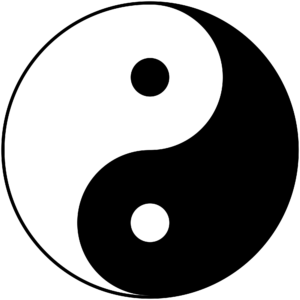
. . . but doesn’t go further than that. But the levels which are actually used to build everything (including the beings which inhabit this universe, as well as the physical existences) are the levels of 16 and 32, which are preserved in a different perspective (a spiritual system called the ifa), and they include self/other (although this is really a redefinition of these concepts, since they exist in somewhat different forms senior to this universe).
Selfishness, on the other hand, refers to a self-centred and egocentric attitude where one prioritizes their own needs, desires, or interests over others’, often at the expense of those around them. It involves a lack of consideration or empathy for others’ feelings or well-being, driven by excessive focus on personal gain or satisfaction. So again we come across the polarity of self and other, in exploring these concepts.
Ego refers to the conscious and unconscious aspects of a person’s self-image or self-identity. It involves the individual’s perception of themselves, including their sense of importance, worth, and capabilities. While a “healthy ego” (according to some definitions, at least) can contribute to self-confidence and resilience, an overinflated ego can lead to arrogance, defensiveness, and an exaggerated sense of superiority.
Self-esteem pertains to the overall subjective evaluation of one’s worth, competence, and value as a person. It influences an individual’s confidence, resilience, and ability to handle life’s challenges.

Healthy self-esteem involves a balanced and realistic self-appraisal, fostering a relatively positive self-image and a sense of self-worth.
An alternative view on this is that ego is false self-esteem, as a substitute for genuine self-esteem. This goes along with the observation that ego can be “bruised” by the views of others, but genuine self-esteem cannot because it is internal (i.e. from the self).
Genuine self-esteem is also based on reality. If one is taught to feel “self-esteem” without having a real basis for that, it then has the characteristics of ego as a substitute for genuine self-esteem, is fragile, and causes significant problems
Some researchers in areas like psychiatry say that self-esteem doesn’t exist, because, if you look at the other parts of the perspectives they use, there is nothing left to be self-esteem. But, since self/others is a basic building-block of this universe, and it is easily observable that some beings regard their self more highly than others regard theirs, it might be more correctly said that their perspectives define parts of self-esteem within the other definitions they use.
It is also interesting to observe that individuals who make a big improvement to their self-esteem, find that others treat them differently too. Which points at a deep relationship between self and others.
Being different implies standing out or deviating from societal norms, conventions, or expectations. It signifies embracing one’s uniqueness or individuality, expressing oneself authentically without conforming to external pressures to fit in.

In summary, individuality and uniqueness celebrate the distinct qualities of individuals, while the self encompasses one’s identity and experiences. Selfishness and an inflated ego prioritize the self at the expense of others, whereas self-esteem fosters a healthy reality-based self-appraisal. Being different involves embracing one’s uniqueness without conforming fully to all societal norms. Understanding these concepts can facilitate a balanced and authentic expression of one’s identity while fostering healthy relationships and societal harmony.
In looking at these concepts I hope you spotted how the common definitions of each of them are mainly defined in terms of the others, for example, individuality is said to be about uniqueness, ego is about self, and being different is about uniqueness etc. Which, if looked at as a whole, results mostly in a circular non-definition:

. . . since each is defined mainly in terms of the others. I’ve presented some alternative perspectives to consider as you read the rest of this article . . . precise definitions matter, else one is really just feeding oneself confusions when one uses words which one assumes one understands but actually doesn’t have a precise definition for.
The History Of Individuality And Cultural Evolution
Humans are a group species in many ways.

Most people currently who think of themselves as very individualistic are still relying on society for the majority of their function, such as the inventions they use every day like the internet, mobile phones, cars, and the infrastructure they rely on such as electricity and water supplies, roads, the rule of law etc.
The common idea from perspectives on individuality, that each person exists independent from others is mostly incorrect, unless one is living on one’s own in a genuine wilderness without any communication with anyone else at all, which is, of course, very rare these days, and even then, most of one’s ability to survive would be based on things one had learned from society, for example, an individual human, even if they do it alone, would not be figuring out from first principles that it’s possible to make fire, since they would already know that from society.

Most of those who live in wilderness areas today, are still very dependent on civilization, or their own culture, for some of their essential survival needs.
While civilization can be seen as a set of limitations (laws and social conventions), as well as assumed knowledge, it confers a lot of benefits to the individuals in it, and to society as a whole, by these limitations being applied.
Individuality has evolved significantly throughout history, shaped by cultural, social, and technological advancements that have influenced the way people perceive themselves and express their uniqueness. In ancient civilizations, individuality was often suppressed in favour of conformity and what benefits the group. Individuality at that time was primarily reserved for rulers, leaders, or thinkers whose ideas could influence the masses.
During the Renaissance period, a shift occurred as humanism emerged (originating in northern Italy in the 13th and 14th centuries), emphasizing the value of the individual. This era celebrated human potential, intellect, and creativity, encouraging self-expression in art, literature, and philosophy. (This was actually due to major changes in spiritual factors, which are too advanced and controversial to go into in this brief article). Thinkers like Michelangelo, Leonardo da Vinci, and Machiavelli championed individuality through their innovative ideas and works.
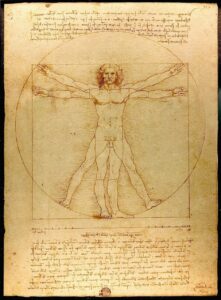
The Age of Enlightenment further propelled the concept of individualism. Philosophers like John Locke and Jean-Jacques Rousseau highlighted individual rights, freedoms, and autonomy. The emphasis on reason, liberty, and personal agency laid the groundwork for modern notions of individuality.
Industrialization and the rise of capitalism in the 18th and 19th centuries led to increased individual autonomy, due partly to better standard of living allowing more freedoms. Economic changes allowed for more opportunities, enabling people to define themselves beyond traditional roles. However, this period also saw a tension between individuality and conformity as industrial societies standardized certain aspects of life.
In the 20th century, individuality underwent a transformation propelled by technological advancements, globalization, and cultural shifts. Mass media, the internet, and social networks provided platforms for diverse self-expression and global connectivity, amplifying individual voices and identities as well as a broad range of subcultures.
Today, individuality continues to evolve amid a complex interplay of societal influences. Movements advocating for inclusivity, diversity, and empowerment have expanded the understanding (and many misunderstandings) of individuality beyond traditional norms.

Overall, the evolution of individuality reflects a progression from a focus on collective conformity to a celebration of diversity and personal expression. It continues to be shaped by historical, social, and technological changes, paving the way for a more multifaceted understanding of human identity.
The Advantages And Disadvantages Of Individuality
Individuality, celebrated for its uniqueness and distinctiveness, offers both advantages and disadvantages that have a significant impact on personal development, societal dynamics, and interpersonal relationships.
Advantages of Individuality:
Creativity and Innovation: Individuality fosters creativity by encouraging unique perspectives and approaches. When individuals express themselves authentically, they bring fresh ideas, innovations, and solutions to various aspects of life, driving progress and advancement which everyone in society benefits from.

Many important discoveries, innovations, or great artistic achievements are due to individuals, although they all related to some degree to the cultures they found themselves in, which are, to some degree, the result of earlier individuals, as well the results of people functioning as groups (and the existence of Morphic-fields, which exist somewhat independent of the groups they relate to and, to a large extent, control).
These discoveries, innovations, and art also benefit everyone else in society. More freedom results in more differences between people (which was discovered by studies which attempted to prove the opposite), allowing more discoveries, innovations, and art, benefiting everyone globally, although to widely varying degrees.
Personal Growth and Fulfilment: Embracing individuality encourages greater freedom, allowing people to explore their interests, values, and beliefs, leading to a deeper understanding of themselves. It promotes personal growth, self-discovery, and a sense of fulfilment as individuals align their actions with their true identity. Individuality can result in a greater sense of self-awareness, self-acceptance, and personal empowerment.

Diverse Perspectives: In a society that values individuality, diverse perspectives flourish and add value. People from different backgrounds, cultures, and experiences contribute their unique viewpoints, enriching discussions, and improving problem-solving and decision-making processes with a wide range of ideas and insights.
Resilience and Adaptability: Individuality cultivates resilience and adaptability by encouraging people to be self-reliant and resourceful. Individuals confident in their uniqueness are often better equipped to navigate challenges, adapt to change, and overcome obstacles, fostering a more resilient society. Individuality also helps by including acceptance of our flaws and imperfections, as well as our strengths and talents, which makes people’s models of reality more realistic, enabling improved functionality and well-being.
Cultural Progression: Throughout history, individuals embracing their uniqueness have driven cultural progression. Great artists, thinkers, and visionaries who dared to defy societal norms have shaped literature, art, science, and social movements, leaving lasting legacies that profoundly influence future generations.
Happiness.

Increasing freedom of choice, social mobility and recognition of individuals often results in greater happiness, particularly in individuals with good functional self-esteem, i.e. self-esteem based on reality, rather than fragile ego based on incorrect beliefs.
Disadvantages of Individuality:
Social Alienation and Isolation: While individuality promotes uniqueness, excessive emphasis on it can lead to social alienation, loneliness or isolation. Those who deviate significantly from societal norms might feel marginalized or disconnected, struggling to find acceptance or support, especially if they also lack self-esteem.
Increased stress, decreased support.

People in more individualistic cultures can lack the support networks present in more group-centred cultures, and can be more stressed especially if they lack self-esteem. People in more individualistic cultures can also lack skill in managing the emotions of themselves and others, which has a variety of negative effects.
Lack of purpose and decreased potential. Lack of purpose is especially common after societies become free from former unquestioningly accepted social mechanisms (such as religions and strong social norms), for people who lack individuality and self-esteem. People with low individuality are also more likely to lose sight of their potential and passions.
Conflict and Disunity:

A strong emphasis on individuality might lead to conflicts arising from clashes in beliefs, values, or opinions. When individuals prioritize their uniqueness over collective goals or harmony, it can create divisions and hinder cooperation within communities or societies. Being very competitive can be beneficial in some ways, such as in sports where individuals compete, but is not ideal in other ways . . . for example, in the book “Rich Dad, Poor Dad”, Robert Kiyosaki explains that business is usually a team activity, and that education based on competition does not train people to succeed in business. Of course, the education system is not designed to create successful business people, it is specifically and knowingly designed to create compliant employees, which is good for employers, but bad for individuals and society.
Resistance to Conformity: In certain contexts, excessive individuality might result in resistance to beneficial types of conformity. Situations requiring adherence to rules, standards, or social norms for the greater good may face opposition from individuals who prioritize their personal freedoms or preferences.
Trying hard to be different just for the sake of it is not ideal, because it is a form of polarization, which, as is known in advanced studies of relevant subjects, results in lack of awareness, understanding and comprehension in areas where one is polarized.
Lack of Cohesion and Identity Crisis:

A society overly focused on individuality might struggle to foster a shared identity or sense of cohesion. This can lead to feelings of fragmentation, a loss of collective purpose, or an identity crisis, impacting social unity and the functionality of a society.
Overemphasis on Self-Centeredness: While individuality and self-esteem encourages self-expression, an excessive focus on oneself can lead to selfishness or egocentrism. Prioritizing personal needs or desires while ignoring the well-being of others can strain relationships and hinder cooperation in communities. Too much use of ego also results in lower performance in the arts, where self-indulgence is known to worsen the quality of creative output.
There can also be a danger of overgeneralization and mis-definitions arising from too much emphasis on individualism, such as the idea that all individuals are morally equal, when in fact it is easy to observe that different individuals, as well as different cultures, have different degrees of accepted morality in their beliefs and behaviours, however one defines morals.
Balancing the Advantages and Disadvantages:
Achieving a balance between celebrating individuality and promoting communal interests is crucial. Encouraging individuality while fostering empathy, understanding, and respect for the perspectives of others helps mitigate the disadvantages. Emphasizing common values, goals, and cooperation alongside the celebration of uniqueness can contribute to a more harmonious and successful society.
Basically, individuals exist, and groups (including society) observably exist as more than the sum of their members. The relationships between individuals and groups are profound and complex. Ignoring either of those realities is not ideal.
Art and Individuality: Innovation, Creativity, Uniqueness
Art and creativity are essentially personal activities, done by an individual, although the results can be manifested by a group, such as a great composer writing for an orchestra. Design can be done by an individual but is often done by a group. Artisan work (referred to as “craft” in the past) is done by an individual but uses methods and perspectives already agreed by the culture (i.e. it is not focused on innovation) rather than deliberately exploring beyond current agreements as art does.
The distinction between art, craft and design lies mainly in their primary focus, though there are inevitable overlaps.
Art, particularly fine art, is mainly focused on aesthetics.
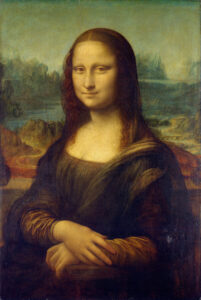
Art is creativity relating to conceptual ideas used as a means to communicate, evoke emotions and present challenging perspectives. It is also enjoyed for its own sake, not for it’s practical functionality as one would with design. Art presents something as being worthy of unusual attention, unlike most of the experience of everyday life.
Craft or work by an artisan is about skilled workmanship by an individual (as opposed to mass-production) which can be used either for functional or decorative purposes. Design is primarily about the functionality of the results.
Creating art, and, to a lesser extent appreciating art, are some of the strongest expressions of individuality, since art is focused on personal exploration and expression. Art is, by definition, unique . . . copying some art created by someone else is not art.
If you are interested in more details about these topics see my article section on art, design, fine art, and other relevant concepts here.
Individuality And Marketing
Marketing can be traced to mass production in Mesopotamian societies as early as 1500 BCE. It grew strongly as a management discipline originated in USA in the 1950s, after having started earlier in Europe.
The main reason marketing is needed is when there is more supply than demand, so you have to compete for the attention of the consumer.

The biggest example of that is when the industrial revolution resulted in a dramatic increase in production.
By contrast, in the USSR for example, where there was much less supply than demand in most areas, word of mouth was all you needed because you could make anything which functioned, people naturally talked about it, and would be literally lining up to obtain it. This was explained to me by someone I know who grew up in the USSR. Marketing actually worked against you in that culture . . . if you had to try to persuade others that your product was good, it obviously wasn’t.
Before the industrial revolution, almost everything was, by necessity, made individually. With the advent of production lines, an unlimited number of identical products could be made. This resulted in numerous huge advantages such as dramatically increased production and quality at the same time as decreased costs, standard parts for replacement and interchangeability, and, with increasing mechanization, freeing time for humans to focus on providing more valuable input to the systems, and increasing the rate of innovation and development. It also allowed a huge increase in the general standard of living, which, somewhat ironically, resulted in the increased demand for unique, individually created items we see currently.
An example of these changes can be seen in tailoring, where, before the industrial revolution, everything was hand-stitched. Then machine stitching became possible, resulting in perfectly even, reliable stitching, at a much lower cost. After this became commonplace, there is now increasing demand for the luxury of hand-stitching. The same applies to the watch industry, going from hand-made being the only option (and only for a very small minority who could afford it), through mass-produced items making watches within the reach of all of the population for the first time, evolving into the current desire for uniqueness and creative design, hand-finishing, and even hand-made aspects of luxury watches (I’ll talk about some examples of that, below).
The recent interest in individuality and uniqueness led to the advent of limited edition watches. These are still much sought after when the edition is limited for a legitimate reason, for example:
The A. Lange & Söhne tourbograph perpetual, “pour le mérite”:
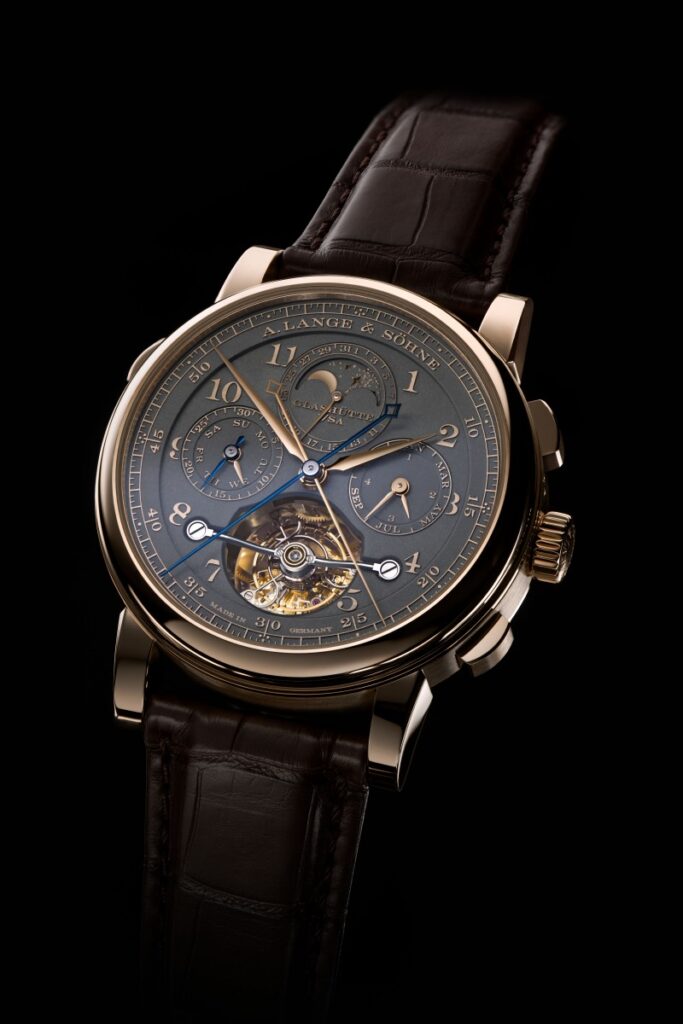
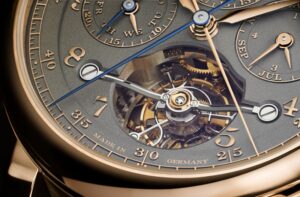
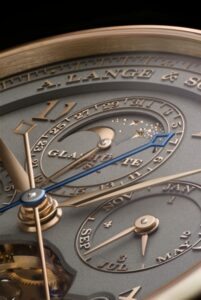
. . . combines five outstanding complications: fusée-and-chain transmission, tourbillon, rattrapante chronograph, and perpetual calendar. It is available on “honey-gold”, silver or platinum, and limited to 50 pieces, commemorating their 175th anniversary.
But, unlike in the watch above, the concept of limited edition watches has also been used as a marketing ploy to increase sales of watches which are standard apart from something like a different coloured dial, released as a limited edition, which is, understandably, disliked by enthusiasts. For more on the fascinating love/hate relationship with limited edition watches, read my article here.
Marketing exaggerates characteristics, or even falsely assigns characteristics, in order to fit what the market desires. For example, there are watches being marketed as “art”, when they have no influences other than the usual mechanical engineering and fine jewellery influences, both of which are clearly design rather than art. I guess one could say that the marketing of an object as “art”, makes them somewhat worthy of the special attention which is a part of the definition of art, but that’s a bit of a stretch, really.
Most brands seek to differentiate themselves in the market, and thus can be seen as individual to some degree. The degree to which they are really individual, can vary widely. One way to judge how individual a watch is, would be to assess how much of its influences are different to the main influences of watches in general (which are mechanical engineering and fine jewellery).
Individuality And Watchmaking Today.
For reasons I’ve explored in this article, most people these days want to think of themselves, and to be seen by others, as individual and unique. This means that a lot of brands will market themselves as individual and different (even if it’s not particularly true), although there are also brands making watches which go in the other direction, by being deliberately related to significant historical watches.
As in the title of this article, individuality could be seen as the new conformity, since everyone else is “being different” too. I explore this point in more detail in my article on uniqueness, here.
One answer to the question of how to be different when everyone else is being different too, is creativity and art, because that is genuine individuality, rather than just saying it because that view is held by the culture one lives as part of.
While you’re looking at the watches below, think for yourself about how individual they are, relating to the areas I’ve mentioned in this article. There are plenty of other articles about outstanding individual watchmakers which show you some great watches and tell you what to think. I’d hope that this article has motivated you to think for yourself on these matters, and apply the concepts discussed above, and be aware of what interests you most about each watch, and what that really relates to.
Collaborations between watchmakers and artists are a great way to incorporate the individuality and creativity of art, within the engineering design of an otherwise conventional watch.
Here are a couple of my favourite examples of artist collaborations which result in creative watch design:
Blancpain, Métiers d’Art, The Great Wave:
This beautiful dial uses semi-transparent volcanic rock known as silver obsidian from Mexico as the background, and white gold patina for the applique waves, and was inspired by the famous Japanese woodblock print “The Great Wave Off Kanagawa,” by Hokusai.
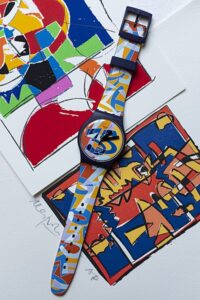
. . . has had a large number of collaborations with artists including Sam Francis, Mimmo Rotella, and Nam June Paik.
The Swatch Art Peace Hotel “brings together diverse artists from around the world. Residents from a wide range of disciplines stay for periods of 3–6 months, united under one common goal: to create and collaborate.”
While a lot of watches market themselves as if they are “art” designed by an individual exploring abstract concepts, some watches are genuinely designed by one person, although obviously, just from looking at them, still largely based on existing design concepts (nothing wrong with that, of course).
Some of the best of the contemporary watchmaking individuals include:
François-Paul Journe:
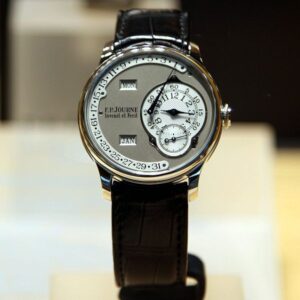
One of the most esteemed watchmakers of our time is François-Paul Journe, renowned for his eponymous brand, F.P. Journe. A native of France, Journe developed an early fascination with timepieces, leading him to train at the Paris Watchmaking School. He founded his brand in 1999.
Hailing from Finland, now living in Switzerland, Kari Voutilainen is esteemed for his exquisite craftsmanship and meticulous attention to detail. With an extensive background in restoration and repairing vintage timepieces, Voutilainen developed an unparalleled expertise that he applied to his eponymous brand. His watches are characterized by traditional handcrafting techniques, including guilloché dials and intricate movements.
Philippe Dufour, a luminary in the watchmaking realm, is recognized for his exceptional skill and devotion to traditional watchmaking methods. His reputation was solidified with the creation of the iconic Simplicity timepiece, revered for its understated elegance and technical brilliance. Dufour’s approach emphasizes the mastery of hand-finishing techniques, showcasing a deep reverence for horological traditions. He makes each of his watches by hand, from start to finish.
A rising star in the watchmaking world, Rexhep Rexhepi established his brand, Akrivia, in Geneva:

Born in Kosovo, Rexhepi’s journey to becoming a prominent watchmaker reflects his remarkable talent and determination. His watches exhibit a harmonious blend of traditional Swiss craftsmanship with a contemporary aesthetic. Rexhepi’s creations are celebrated for their exceptional finishing, intricate movements, and distinctive design language, earning him acclaim among collectors and aficionados alike.
George Daniels (1930-2011):
Although no longer alive, George Daniels remains a revered figure in modern horology. His contributions to the craft, including inventing the Co-Axial escapement, revolutionized mechanical watchmaking. Daniels’ dedication to horological innovation and his exceptional skill as a watchmaker earned him a place in history as one of the most influential figures in the industry.
– a British watchmaker who creates ten hand made watches annually, launched his brand in 2001 after he had studied watchmaking for seven years. He learned from the renowned George Daniels (above).
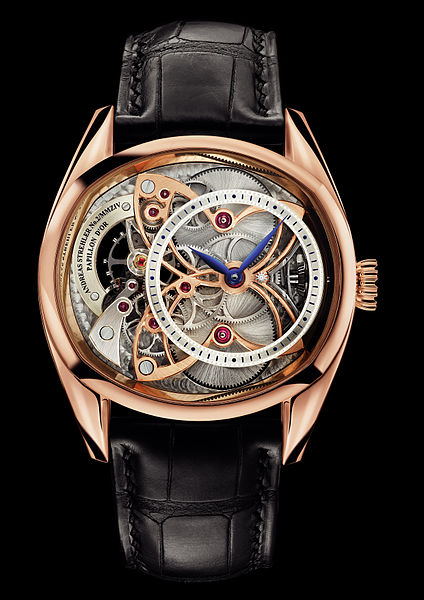
. . . he started restoring clocks and antique watches in 1995, and holds a Guinness world record for the most exact moon phase indicator in a watch.
Antoine Preziuso:
. . . creates original, highly complicated watches in Switzerland. (I was unable to give the link above, since his website was down when I last checked).
. . . Aaron Becsei is a 3rd generation watchmaker. He makes all the parts of his sometimes ornate watches himself.
. . . also in Switzerland, makes his unusual watches himself.
. . . watchmaking brothers, Tim and Bart Grönefeld, are third generation watchmakers who now run a family business which started in 1912. They make intricate watches using traditional techniques.
. . . The McGonigle brothers, John and Stephen, combine Irish designs and Swiss engineering, creating unique watches.
Maximilian Büsser, of MB&F, makes exceptionally unique and interesting watches, as well as collaborating with other independent watchmakers.
Here is a great example of their extraordinary watchmaking:
The HM9 Sapphire Vision from MB&F:
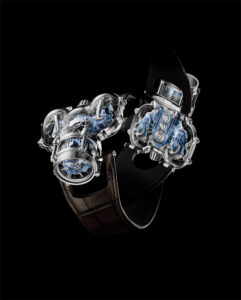
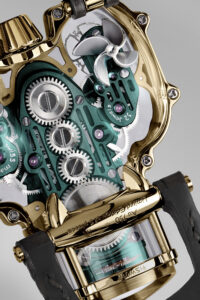
. . . is visually extraordinary as well as being technically impressive, and was made available to the public in four limited editions, with just five pieces each. Made as “a tribute to the extraordinary automotive and aeronautic designs of the 1940s and 50s. The result was a case like no other that echoed the epoch’s flowing, aerodynamic lines.“
They decided to present their amazing and beautiful movement encased in “an outer hull of sapphire crystal and precious metal.” An outstanding example of individual watch design, and also a great example of an unusual watch.
Denis Flageollet, of De Bethune, with a focus on innovative and exceptional engineering, produces beautiful and unique watches:
The DB28 XP Météorite by De Bethune:
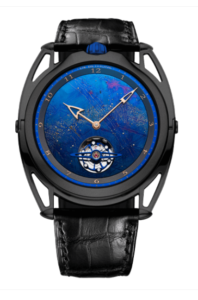
. . . has a beautiful dial showing a significant art-jewellery influence in the irregular marks.
And, of course, we come to UnconstrainedTime watches:
Just from looking at them you can see that they are a lot more unique than most unusual watches. One of the main reasons for this is that my watch designs are not arising out of a basis in watchmaking, or even a knowledge of existing watches. My background was fine art and cutting-edge contemporary music composition, so my watches have little or none of the engineering and fine jewellery influences inherent in other watches, while they are based in the 12-point time concept from ancient horology, in synergy with genuine art.
While I am excited about continuing to create new UnconstrainedTime watches myself, I also encourage others to explore the creative freedom facilitated by our radically simplified small-footprint time-display concept, with our open art/design competition (which is, of course, really about art rather than design) and our interest in collaborating with established creators to make one-off UnconstrainedTime watches.
Our watches align strongly with the definitions of art (rather than design), such as having a strong focus on aesthetics, presenting exploratory concepts and stories as being worthy of special attention etc.
UnconstrainedTime watches are fundamentally based on what might be called conceptual art jewellery principles. This is very different from almost all collaborations between artists and watchmakers, where the art and the watchmaking remain mostly separate (if you removed the art and the colours, the remaining watch wouldn’t obviously remind you of the art, which shows that the two aspects are mostly separate).
Our watch cases are hand cast, usually in recycled metals, by artisans, using a combination of the traditional lost-wax process working in conjunction with 3D printing to make the wax form. They are also assembled by hand by a leading British watchmaker.
Don’t miss our launch!
. . . make sure you subscribe to our Priority List for notifications.
What do you think is the most interesting aspect of individuality in relation to watchmaking? Let us know in the comments below or in our social media.
Author: Chris Melchior

This article was authored by Chris Melchior, founder of UnconstrainedTime and creator of the original range of wrist-worn sculptures of this unique artistic adventure.
Chris has extensive knowledge and experience of creativity, including fine art and cutting-edge contemporary music composition, and was awarded a First Class Honours Degree in fine art and music with a minor in philosophy.
Chris’s life-long artistic obsessions include organic forms and textures, abstraction, fractals, and the aesthetic essence of musical genres.
He has developed unusually deep insights into the elemental concepts underlying areas including Eastern and Western philosophies, science and technology, creativity and the arts, as well as empirical spirituality in which he is acknowledged as a leading authority.
He has a profound fascination and love for the unique and synergistically creative combination of fine art with the ancient essence of time-keeping which evolved into the UnconstrainedTime project.


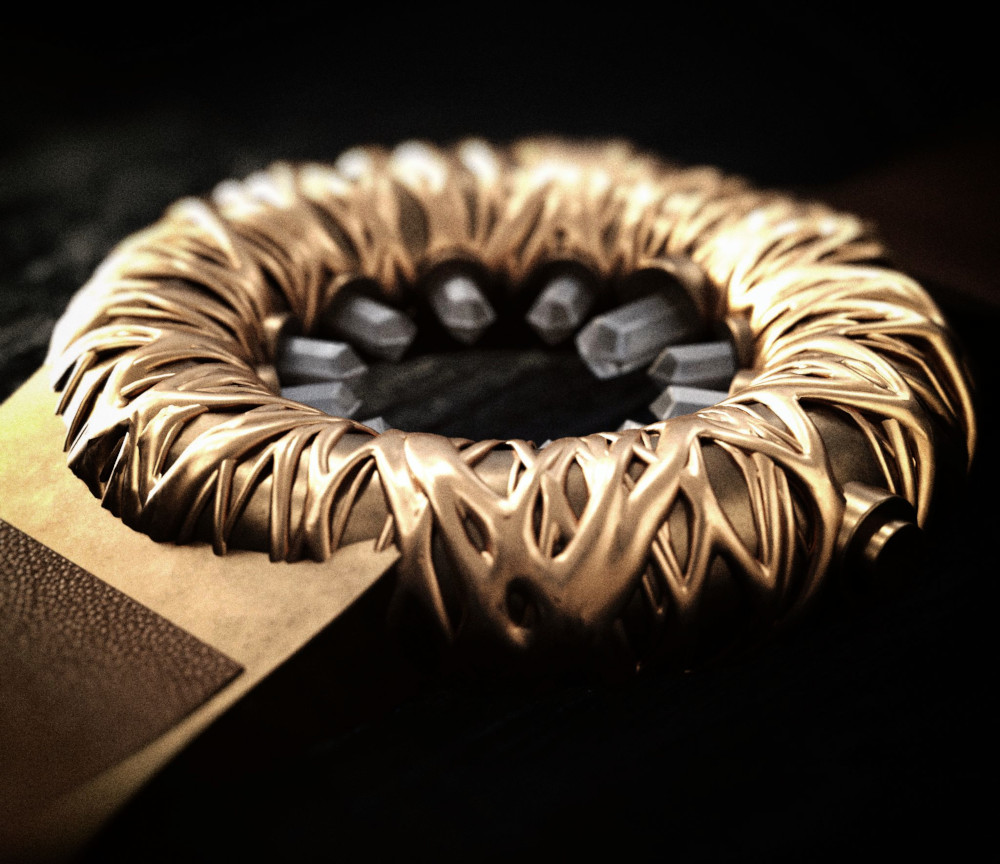


Leave a Reply